South Korea is home to 12 UNESCO World Heritage sites that showcase the country’s diverse cultural heritage and stunning natural landscapes. From ancient Buddhist mountain temples to volcanic islands, Korea’s World Heritage sites offer visitors insight into the long and rich history and natural beauty of the country. Here is an in-depth guide to all of the UNESCO World Heritage sites across South Korea.

Jeju Volcanic Island and Lava Tubes
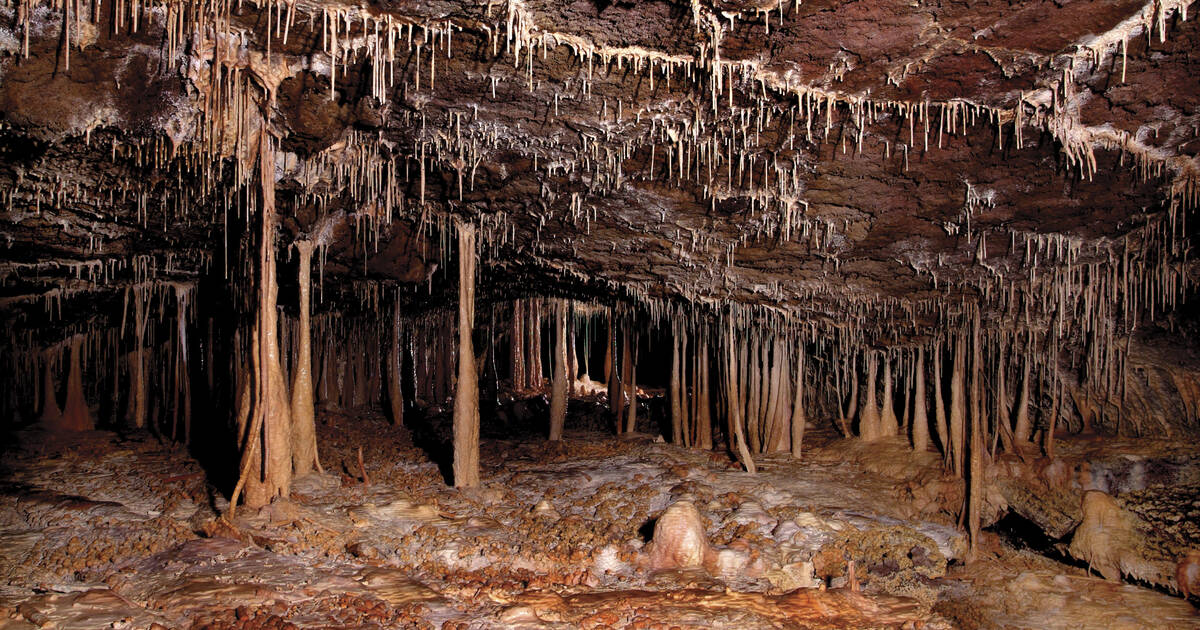
Jeju Volcanic Island and Lava Tubes were inscribed on the UNESCO World Heritage list in 2007. Located off the southern coast of the Korean peninsula, Jeju island was formed entirely from volcanic eruptions approximately 2 million years ago. The site includes Geomunoreum Lava Tube System, the finest such cave system of dated eruptions in the world. Hallasan Mountain, the tallest peak in South Korea at 1,950 meters, is a shield volcano that rises prominently from the center of the island. The Manjanggul Lava-Tube Cave is one of the longest lava tube systems in the world at over 13 km long. Jeju Volcanic Island and Lava Tubes showcase the geological evolution of the Korean Peninsula and provide habitats for plant and animal life (1).
Key sites to visit on Jeju Island include:
- Hallasan National Park – Hike up South Korea’s tallest mountain and visit the crater lake at the peak.
- Manjanggul Lava Tube – One of the longest lava tubes in the world with colorful rock formations.
- Seongsan Ilchulbong – Iconic volcanic tuff cone rising from the ocean.
- Seongeup Folk Village – Traditional Jeju village with stone houses.
- Cheonjiyeon Falls – Scenic waterfall surrounded by lush forest.
Gyeongju Historic Areas

The Gyeongju Historic Areas contain a remarkable collection of archaeological sites and monuments from the ancient Silla Kingdom, which ruled part of Korea from 57 BC to 935 AD. The sites were inscribed as a UNESCO World Heritage site in 2000. Located in central Gyeongju, the capital of Silla, the sites include burial mounds, temples, fortresses, Buddhist art, and historical monuments situated in the valleys of Mt. Namsan and Mt. Toham (2).
Key sites to visit among the Gyeongju Historic Areas include:
- Cheomseongdae – Korea’s oldest astronomical observatory dating to 634 AD.
- Anapji Pond – An artificial lake and royal garden from the Silla era.
- Cheonmachong Tomb – A tomb with 11,500 artifacts inside discovered in 1973.
- Bulguksa Temple – Historic Buddhist temple with ornate stone pagodas and bridges.
- Seokguram Grotto – Hermitage with breathtaking Buddha statue looking over the East Sea.
- Daereungwon Tomb Complex – Large ancient tomb complex with 20 individual tombs.
Namhansanseong

Namhansanseong is a historic mountain fortress located in central South Korea which was built during the Joseon Dynasty in the 17th century. Its construction was focused on protecting the capital city of Seoul from foreign invasions coming from the east. The fortress sits on Namhan Mountain and spans over 25 kilometers, featuring various defensive walls, gates, secret passages, and
pavilions. It was designed according to the unique topography of the mountainous terrain and showcases remarkable early 17th century military architecture. Namhansanseong was added to the UNESCO World Heritage List in 2014 as an “outstanding example of an integrated system of defensive mountain fortifications” (3).
Key sites to visit at Namhansanseong include:
- North Gate and South Gate – Main entrance gates to the fortress.
- East Gate – Rear entrance gate perched dramatically on a cliff edge.
- Secret Gate – Narrow hidden passage used for sneak attacks.
- Sujongsa Shrine – Ancient Buddhist shrine dating to 1615.
- Mountain fortress walls – Walk along the impressive fortress walls.
- Sigajeon Shrine – Shrine built to honor one of the fortress builders.
Seokguram Grotto and Bulguksa Temple
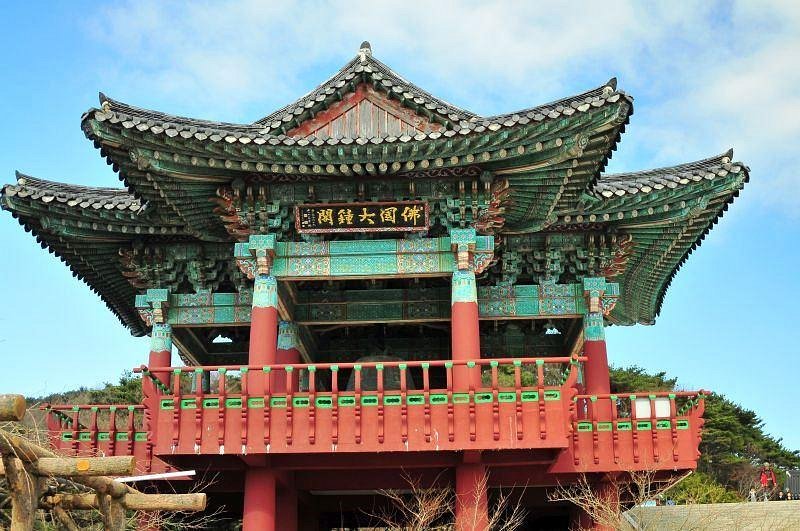
The Seokguram Grotto and Bulguksa Temple together form a historic Buddhist monument complex that was built during the Silla Dynasty in the 8th century AD. Seokguram is considered one of the finest Buddhist cave temples in Asia and contains a serene granite Buddha statue gazing eastward out to sea. Bulguksa temple is located at the foot of Mt. Toham and features ornate dual stone staircases, granite pagodas, and historic wooden halls. The temple’s architecture, pagodas, and religious artwork demonstrate the zenith of Silla culture. The complexes were added to the UNESCO World Heritage List in 1995 as “masterpieces of Buddhist art in the Far East” (4).
Key sights at Seokguram and Bulguksa include:
- Seokguram Grotto Buddha Statue – Serene granite Buddha in sublime sea-view setting.
- Dabotap and Seokgatap Pagodas – Elegant 8th century stone pagodas with carved designs.
- Main Buddha Hall and East & West Guardian Halls – Historic wooden temple halls.
- Bridge Over the Lotus Pond – Symbolizing the journey to paradise.
- Seokguram Grotto Temple – Stone temple built into the rock face.
- Bulguksa Temple Staircases and Gates – Dual granite stairways lined with lanterns and pillars.
Jongmyo Shrine

Jongmyo Shrine is a Confucian royal shrine in Seoul dedicated to the preservation of Korean ancestral rites and veneration of the Joseon Dynasty royals. It was built in 1395 by King Taejo and houses the “spirit tablets” which memorialize each king and queen. The traditional shrine architecture, rituals, music and dances performed there showcase a complete form of Confucianism in Korea. Jongmyo contains 19 memorial tablets of past kings and 30 of their queen consorts. It was added to the UNESCO World Heritage list in 1995 for its outstanding significance as a sacred Joseon Dynasty site (5).
Key sights to see at Jongmyo Shrine include:
- Jeongjeon Hall – Main hall housing the spirit tablets and Confucian sacrifices.
- Yeongnyeongjeon Hall – Hall of Eternal Comfort housing more spirit tablets.
- Myeongnu Pavilion – Pavilion housing tablets of an additional 7 kings.
- Traditional Jongmyo ancestral rites – See the rituals honoring ancestors.
- Traditional Korean architecture – From the Joseon era with curved tiled roofs.
- Court music and dances – Ritual performances held at the shrine.
Hwaseong Fortress
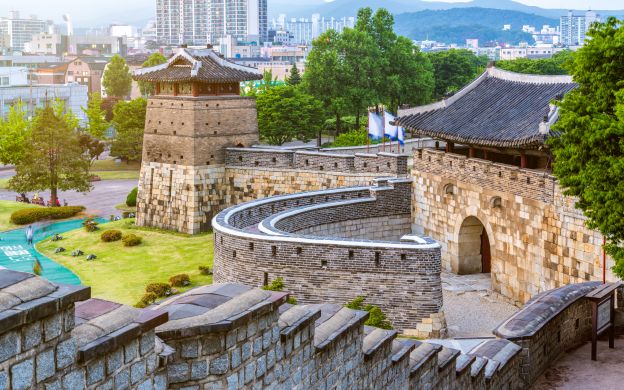
Hwaseong Fortress is a monumental fortress from the late 18th century located in Suwon, South Korea. It was built over 2 years and completed in 1796 as a show of power and to house the tomb of King Jeongjo’s father. The fortress wall spans 5.74 km and incorporates both flatland and hilly terrain into its defensive design. It features fortified walls, parade towers, secret gates, observation towers, fire beacons, and defensive fighting positions. Hwaseong showcases innovative and unique architectural philosophies of the Joseon Dynasty including elements of feng shui. The fortress and city plans influenced development across Korea. Hwaseong was added to the UNESCO World Heritage List in 1997 as an outstanding example of a Korean fortress (6).
Key sites to visit at Hwaseong include:
- Haenggung Palace – Palace within the fortress where the king stayed on visits.
- Seojangdae Tower – Command center of the fortress with panoramic views.
- East, West and South Gates – Main gates of the imposing fortress wall.
- Secret Gate – Narrow camouflaged gate used during sieges.
- Suwon Hwaseong Museum – Museum with artifacts and miniature of the fortress.
- Hwaseong Train – Traditional steam locomotive ride around the fortress.
Changdeokgung Palace Complex
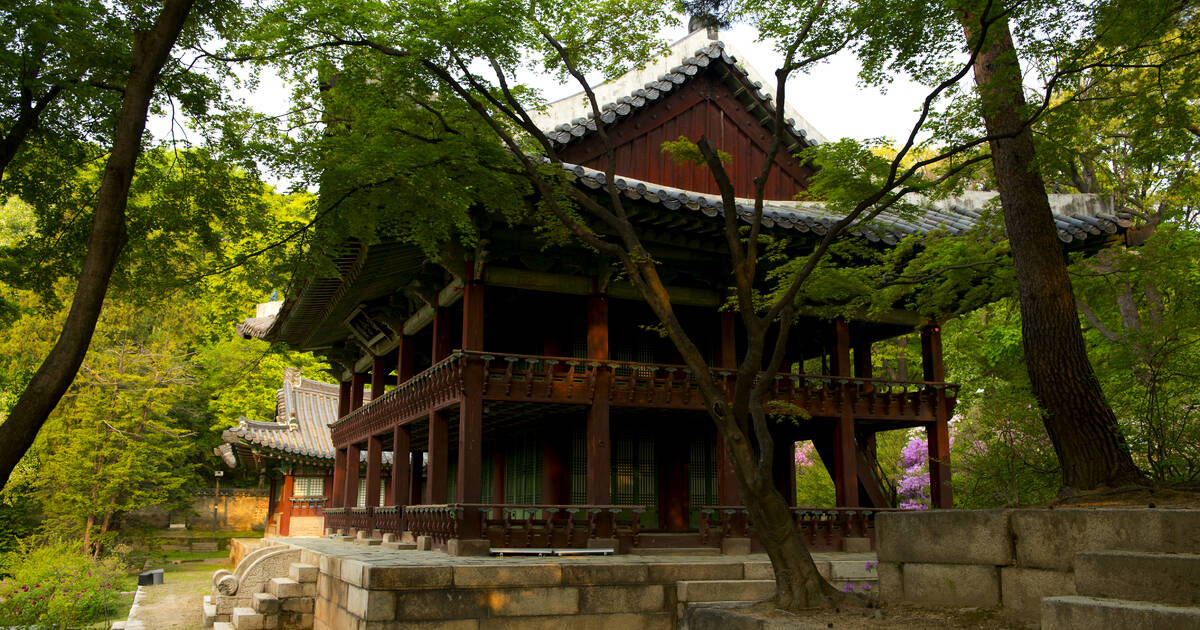
Built in the early 15th century, Changdeokgung Palace served as the secondary palace of the Joseon Dynasty royals. It is exceptionally well preserved and showcases historic Korean palace architecture in harmony with the surrounding natural landscape. Set against the backdrop of Bugaksan Mountain, the grounds feature rare rear garden design elements such as curving footpaths, pavilions, and lotus ponds. A UNESCO World Heritage Site since 1997, Changdeokgung Palace Complex incorporates palace buildings, secret gardens, and the Huwon lush forest retreat (7).
Key sights within the Changdeokgung complex include:
- Injeongjeon Hall – The main throne hall with elaborate architecture.
- Huijeongdang Hall – Historic hall overlooking a pond with a feng shui design.
- Buyongji Pond – Scenic lotus pond representing longevity.
- Juhamnu Pavilion – Small academy for scholars built over water.
- Huwon Secret Garden – Secluded scenic garden for royals with ponds and pavilions.
- Donhwamun Gate – Intricate entry gate with curved eaves.
Gyeongju Historic Monuments

The Gyeongju Historic Monuments contain sculptural masterpieces and archaeological remnants from the ancient Silla capital city of Gyeongju. At its height from 57 BC to 935 AD, the Silla Kingdom ruled over eastern Korea and the sites provide extraordinary insight into this historic Korean dynasty. Remnants contained here include royal tombs, stone pagodas, Buddhist temples, palace sites, fortresses, and a X-ray museum. The monuments were collectively inscribed on the UNESCO World Heritage List in 2000 for their unique Korean Buddhist influences and artistic skill (8).
Key sites among the Gyeongju Historic Monuments include:
- Seokguram Grotto – Hermitage with outstanding Buddha statue.
- Bulguksa Temple – Ancient mountain temple with elegant pagodas and halls.
- Cheomseongdae – Oldest extant astronomical observatory in East Asia.
- Anapji Pond – Artificial body of water with remnants of Silla palace.
- Tumuli Park – Extensive ancient burial mounds and tombs.
- National Museum – Vast collection of artifacts from the Silla Kingdom.
- Namsan Mountain Belt – Fortresses and temples in scenic mountain setting.
Haeinsa Temple Janggyeong Panjeon
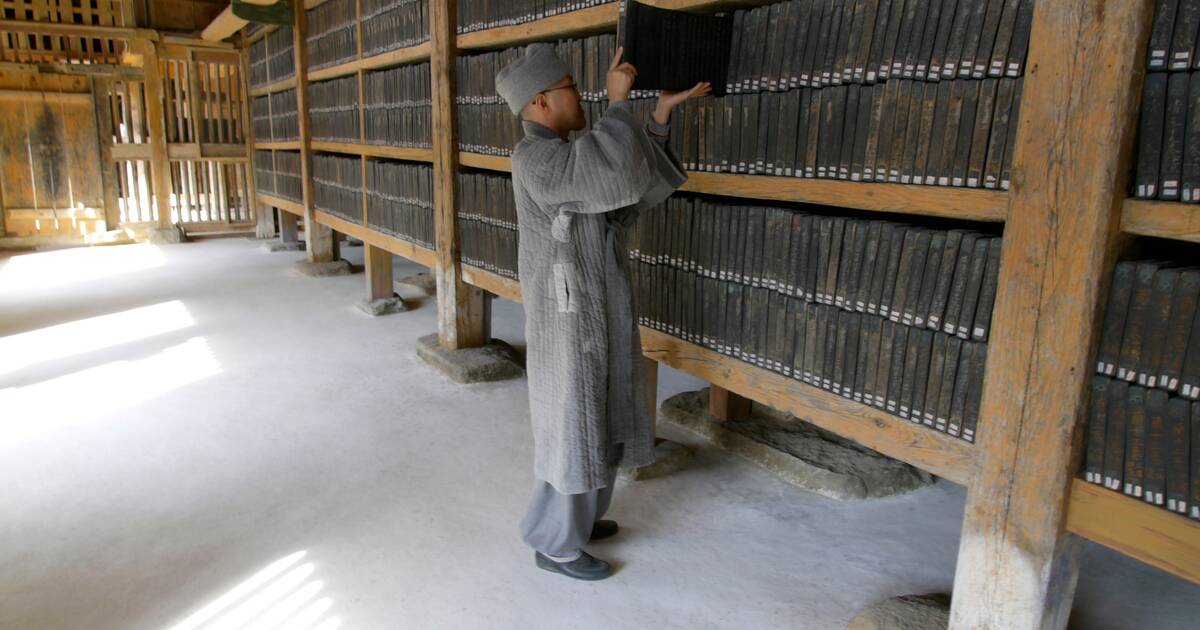
Haeinsa Temple Janggyeong Panjeon is a 13th century depository that houses the complete set of wooden printing blocks for the Tripitaka Koreana, a Buddhist scripture first carved during the Goryeo Dynasty. The Panjeon building was specially designed to house the collection and control temperature and humidity to preserve the woodblocks. The Tripitaka Koreana comprises over 80,000 blocks with some 52 million characters, making it the most comprehensive collection of Buddhist classics in Hanja script. The historic building, wooden printing blocks, and techniques used represent an exceptional achievement in the preservation of human heritage. Haeinsa Temple and Janggyeong Panjeon were added to the UNESCO World Heritage List in 1995 (9).
Key sights at Haeinsa Temple include:
- Janggyeong Panjeon Hall – Unique 13th century depository for the Tripitaka Koreana woodblocks.
- Tripitaka Koreana Woodblocks – Over 80,000 handcrafted wooden printing blocks.
- Daejeokgwangjeon Hall – Main temple hall housing a historic statue of Buddha.
- Iljumun Gate – Dramatic entry gate with towering proportions.
- Hwaeomsa Temple Site – Site of the original 8th century temple complex.
- Mountain setting – Peaceful mountainous national park setting.
Royal Tombs of the Joseon Dynasty
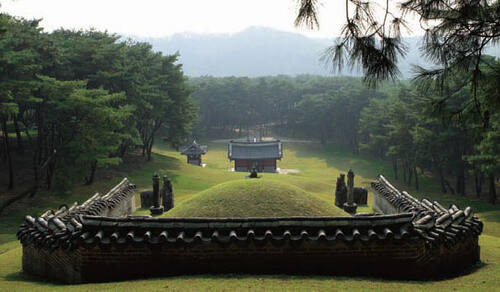
The Royal Tombs of the Joseon Dynasty contain 40 tombs built over five centuries that house the remains of kings, queens, and royals from the Joseon era. The tombs are spread across 18 locations that were carefully selected based on pungsu geology and feng shui principles for auspicious fortunes. The tombs reflect the unique funerary customs of the neo-Confucian Joseon Dynasty that ruled the Korean peninsula from 1392 to 1910. Constructed of stone and earth, the tombs consist of burial mounds, temples, tombstones, and burial grounds nestled in natural landscapes outside of Seoul. The Joseon royal tombs were collectively inscribed on the UNESCO World Heritage List in 2009 (10).
Notable tomb sites of the Joseon Dynasty include:
- Seolleung and Jeongneung – Tombs of influential King Seongjong and King Jungjong.
- Donggureung – Cluster of nine royal tombs in Guri, Gyeonggi.
- Seosamneung – Graves of Queen Jeonghyeon and King Jungjong.
- Yeongneung – Tomb of King Sejong the Great of Joseon.
- Hongyureung – Single isolated tomb of Queen Dowager Insoo.
- Yangju Heungguksa Temple Site – Ancientfunerary shrine for four early kings.
Sansa, Buddhist Mountain Monasteries in Korea
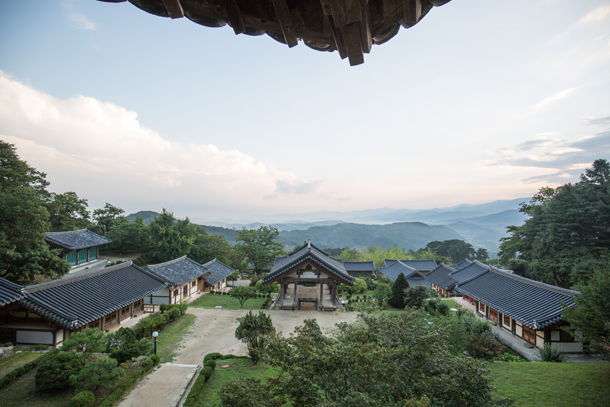
The Sansa are Buddhist mountain monastic sites located across South Korea that were established to spread Buddhism beginning in the 7th century. The seven temple sites contain major monasteries and hermitages set in serene natural mountain landscapes typical of the religion’s ascetic spiritual roots. Ancient pagodas, historic timber architecture, and artifacts showcase the impact of Buddhism’s spread on Korean art, culture and beliefs. The temple sites also facilitated regional commercial and economic development well into the 19th century. The Sansa were collectively inscribed on the UNESCO World Heritage List in 2018 (11).
The seven major Sansa Buddhist mountain monasteries are:
- Tongdosa Temple – Founded in 646, it is one of the oldest surviving Korean temples.
- Buseoksa Temple – Korea’s oldest wooden pagoda and extensive stone lanterns and pagodas.
- Bongjeongsa Temple – Cliffside temple with views of the Geum River.
- Beopjusa Temple – Home of the five story tall bronze Maitreya Buddha.
- Magoksa Temple – Temple complex built into scenic mountain cliffs and ridges.
- Seonamsa Temple – Coastal temple famous for its scenic views and stone cairns.
- Daeheungsa Temple – A major 16th century Buddhist study center.
Historic Villages of Korea: Hahoe and Yangdong

The historic villages of Hahoe and Yangdong showcase traditional aristocratic Korean culture and architecture of the Joseon Dynasty period. Their layout and buildings encapsulate Confucian culture and the socio-economic structure of traditional society. Nestled in a scenic riverside and mountain setting, Hahoe village contains tile-roofed and thatched roof homes of the Andong Kim family and serves as an ancient educational center. Yangdong village boasts exquisite clan compounds with distinctive architecture, gardens, and artifacts. Inscribed on the UNESCO World Heritage List in 2010, the villages provide extraordinary insight into historic Korean culture (12).
Key sights in the historic villages include:
Hahoe Village:
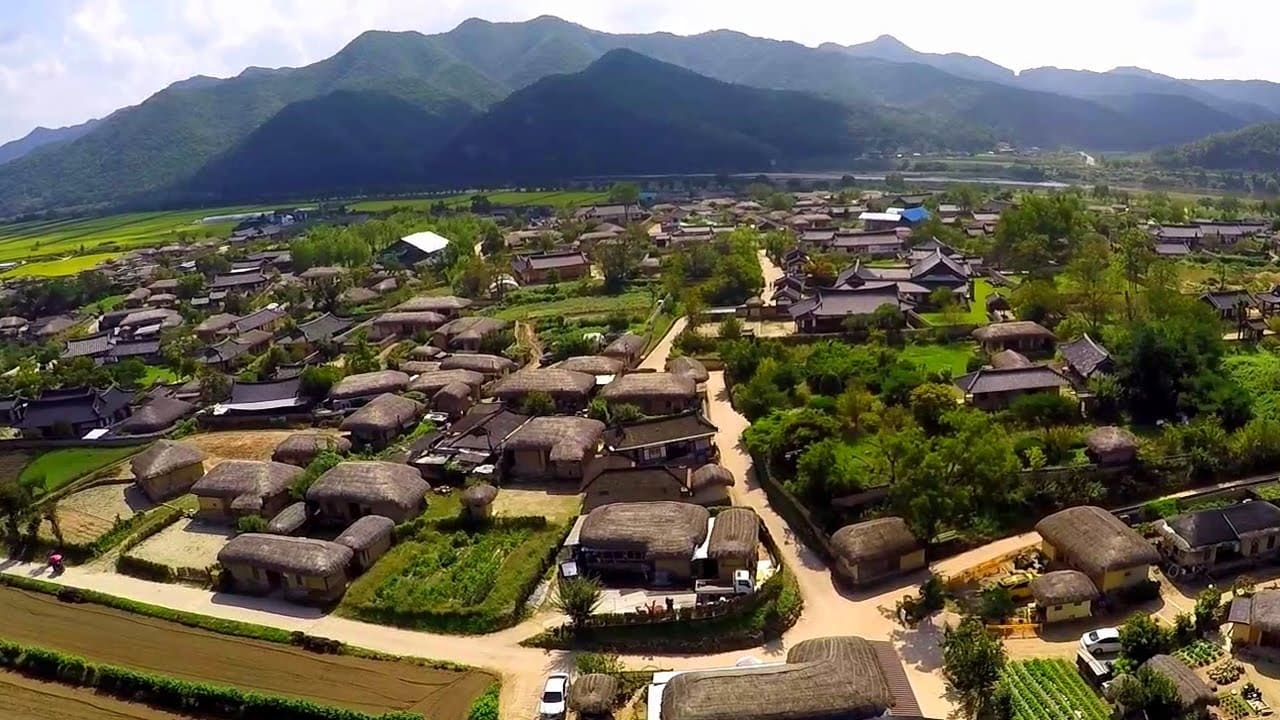
- Buyongdae Cliffside Pavilion – Historic meeting hall with scenic views.
- Traditional tile-roofed Korean homes – Preserved Joseon era village houses.
- Lotus flowers of Pungnammun – Scenic lotus pond gate at the town entrance.
- Hahoe Mask Museum – Collection of traditional Korean Hahoe masks.
Yangdong Village:

- Old Son’s House – A 230-year old aristocratic manor house and garden.
- Yu Family House – Showcasing architecture, artistry, and the traditions of “Sarangchae”.
- Korean ginkgo tree grove – Aged ginkgo biloba trees planted in the 16th century.
- Wanchojeong Pavilion – Historic two-story study hall.
In conclusion, South Korea’s 12 diverse UNESCO World Heritage sites showcase the country’s culture, history, architecture, and stunning natural scenery. Ranging from ancient mountain Buddhist temple sites to volcanic islands to historic palaces and villages, these captivating destinations give travelers a look at Korea’s long cultural heritage and offer one-of-a-kind experiences. Exploring all of South Korea’s World Heritage sites provides a deeper understanding of the lasting impact of Korean dynasties and religions on regional development, arts, fortifications, and funeral customs. Their continued preservation helps protect Korean traditions and offer immersive insight into the past.
References:
- UNESCO. Jeju Volcanic Island and Lava Tubes. UNESCO World Heritage List. Retrieved from https://whc.unesco.org/en/list/1264/
- UNESCO. Gyeongju Historic Areas. UNESCO World Heritage List. Retrieved from https://whc.unesco.org/en/list/936/
- UNESCO. Namhansanseong. UNESCO World Heritage List. Retrieved from https://whc.unesco.org/en/list/1413/
- UNESCO. Seokguram Grotto and Bulguksa Temple. UNESCO World Heritage List. Retrieved from https://whc.unesco.org/en/list/736/
- UNESCO. Jongmyo Shrine. UNESCO World Heritage List. Retrieved from https://whc.unesco.org/en/list/731/
- UNESCO. Hwaseong Fortress. UNESCO World Heritage List. Retrieved from https://whc.unesco.org/en/list/777/
- UNESCO. Changdeokgung Palace Complex. UNESCO World Heritage List. Retrieved from https://whc.unesco.org/en/list/730
